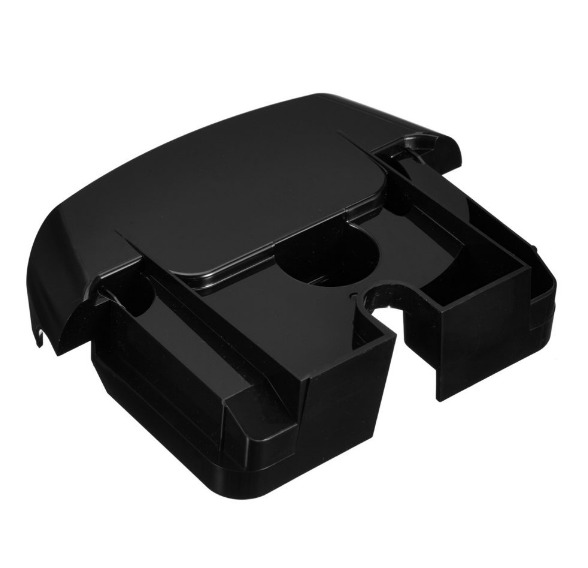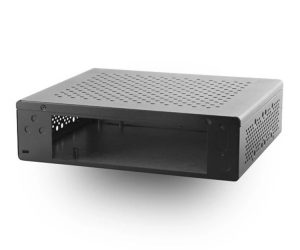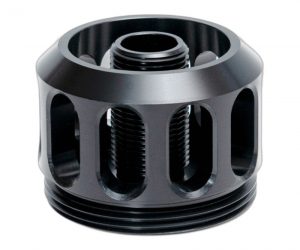We're diving into the common issue of injection moulding short shots and how it affects manufacturing. Let’s uncover why short shots happen, the problems they can cause, and the best ways to fix and stop them. From checking process settings to improving material flow, this article is packed with tips to help you tackle short shot challenges in injection moulding. Come along as we explore the details of short shots and give you the tools to boost both the quality and efficiency of your operations.
1. Introduction
Sure, here is the transformed text:
Injection molding is a popular method for making precise plastic parts. However, it can face issues like short shot. In this blog post, we'll look at what short shot is in injection molding, why it happens, and how to fix and prevent it. By understanding and solving short shot problems, manufacturers can improve product quality, reduce waste, and make production more efficient.
2. What is Short Shot in Injection Moulding?
In the world of injection molding, a "short shot" happens when the molten plastic doesn't fill up the entire mold cavity, leaving us with a part that's only partially formed. It's like trying to bake a cake but forgetting to pour in enough batter – you end up with something that's not quite right. This issue can stem from several causes: maybe there wasn't enough material to start with, the temperature was off, the air couldn't escape properly, or there wasn't enough force pushing the plastic in. Fixing short shots is super important for making sure we end up with perfect plastic parts every time.
When we talk about short shots in injection molding, it means the plastic didn't spread out all the way into the mold, so the final product is incomplete. This can be due to reasons like not enough pressure during injection, the plastic being too cool, bad ventilation, or even too much clamping force. Short shots mess with the quality and function of the part and can also make production more expensive because of higher scrap rates. To avoid these issues, those working with injection molds need to tweak things like how fast they inject, the temperature of the melted plastic, how long they hold the pressure, and how long it takes to cool down. They also need to make sure the mold design and the choice of materials are just right for what they're trying to make.
3. Causes of Short Shot in Injection Moulding
Short shot occurrences in injection moulding can be attributed to several factors. Some common causes include:
- Insufficient Material Volume: If the injection moulding machine does not deliver an adequate amount of molten plastic into the mould cavity, a short shot can occur. This can be due to issues such as inadequate material supply, incorrect injection speed, or improper screw design.
- Improper Melt Temperature: Inaccurate control of the melt temperature can lead to premature solidification of the plastic material, preventing it from completely filling the mould cavity. Factors such as incorrect barrel temperature settings or poor heat transfer within the moulding machine can contribute to this issue.
- Poor Venting: Inadequate venting in the mould can cause air entrapment, leading to incomplete filling of the cavity. Air trapped in the mould restricts the flow of molten plastic, resulting in a short shot. Insufficient venting can be caused by design flaws, improper vent placement, or clogged vents.
- Inadequate Injection Pressure: Insufficient injection pressure can limit the flow of molten plastic, preventing it from reaching all areas of the mould. This can occur due to factors such as incorrect machine settings, worn-out machine components, or blocked flow channels within the mould.
4. Solutions to Fix Short Shot Issues
When faced with short shot issues in injection moulding, there are several effective solutions to rectify the problem:
- Increase Material Volume: Adjusting the injection parameters, such as increasing the shot size or injection speed, can ensure an adequate volume of molten plastic is delivered to fill the mould cavity completely.
- Optimize Melt Temperature: Fine-tuning the melt temperature settings can help maintain the plastic material in a suitable flowable state, allowing it to reach all areas of the mould and minimize premature solidification.
- Enhance Venting: Improving the venting system within the mould, such as adding additional vents or ensuring proper vent placement, can facilitate the escape of trapped air and promote complete filling of the mould cavity.
- Adjust Injection Pressure: Modifying the injection pressure settings to achieve optimal flow and packing of the plastic material can address short shot issues. This can involve increasing the injection pressure or optimizing the machine's hydraulic system.
5. Prevention Strategies for Short Shot in Injection Moulding
Taking proactive measures to prevent short shot occurrences is crucial for efficient injection moulding operations. Here are some strategies to minimize the likelihood of short shots:
- Material Selection and Testing: Carefully select plastic materials suitable for the intended application and conduct thorough testing to ensure they have the necessary flow characteristics and compatibility with the moulding process.
- Design Optimization: Ensure proper mould design, including proper gate placement, venting, and runner system design, to facilitate uniform plastic flow and prevent air entrapment.
- Process Optimization: Fine-tune process parameters such as melt temperature, injection speed, and injection pressure to achieve optimal flow and packing of the plastic material.
- Regular Maintenance and Inspection: Regularly inspect and maintain injection moulding machines, molds, and auxiliary equipment to ensure proper functioning, prevent blockages, and address any potential issues promptly.
6. Conclusion
Short shot is a frequent problem in injection moulding that leads to incomplete or flawed plastic parts. Knowing the reasons for short shots, fixing them effectively, and taking preventive steps are crucial for making high-quality products and reducing waste. By improving process settings, considering better designs, and maintaining equipment properly, manufacturers can lower the chances of short shots and make their injection moulding operations more efficient.
7. Frequently Asked Questions
What is short shot in injection moulding?
Short shot in injection moulding means the plastic doesn't fill the entire mould, leaving a part that's only partly formed. This happens when the melted plastic can't reach all parts of the mould, causing an imperfect or misshapen part.
Several things can cause short shots, like not enough pressure to push the plastic, low temperatures making the plastic too thick, poor air release from the mould, or too much resistance in the mould. Short shots can mess up the quality, how well the part works, and what it looks like. To avoid these problems, it's important to make sure the mould is designed well and adjust the process settings just right.
What causes short shot injection molding?
Short shot injection molding can be caused by factors such as insufficient material volume, improper melt temperature, poor venting in the mould, or inadequate injection pressure. These factors can lead to incomplete filling of the mould cavity, resulting in a short shot.
Short shot injection molding is a defect that occurs when the molten plastic does not fill the mold cavity completely, resulting in a partially formed part. There are several possible causes for this problem, such as:
- Insufficient injection pressure or speed: The injection pressure and speed determine how fast and how much plastic is injected into the mold. If they are too low, the plastic may not reach the end of the cavity before it cools and solidifies.
- Low melt temperature: The melt temperature affects the viscosity and flowability of the plastic. If it is too low, the plastic may be too thick and resistant to flow, leading to short shots.
- High mold temperature: The mold temperature affects how quickly the plastic cools and solidifies in the cavity. If it is too high, the plastic may shrink excessively and pull away from the walls of the cavity, creating gaps and voids.
- Inadequate venting: Venting is the process of allowing air and gases to escape from the mold cavity during injection. If the vents are blocked or insufficient, the air and gases may create back pressure and prevent the plastic from filling the cavity completely.
- Improper gate location or size: The gate is the opening where the plastic enters the mold cavity. If the gate is located too far from the end of the cavity or is too small, the plastic may not have enough time or force to reach the end of the cavity before it cools and solidifies.
How do you fix a short shot?
To fix a short shot issue in injection moulding, you can consider increasing the material volume, optimizing the melt temperature, improving venting within the mould, or adjusting the injection pressure. These solutions help ensure that the mould cavity is adequately filled with the molten plastic.
A short shot is a defect that occurs when the molten plastic does not fill the mold cavity completely, resulting in a partially formed part. There are several possible causes of a short shot, such as insufficient injection pressure, low melt temperature, inadequate venting, or premature solidification. To fix a short shot, one or more of the following solutions can be applied:
- Increase the injection pressure to force more plastic into the mold.
- Increase the melt temperature to improve the flowability of the plastic.
- Increase the injection speed to reduce the cooling time of the plastic.
- Increase the mold temperature to prevent premature solidification.
- Improve the venting of the mold to allow air and gases to escape.
- Enlarge the gate size to allow more plastic to enter the mold.
- Reduce the clamping force to avoid excessive compression of the mold.
How do you prevent short shot injection molding?
Preventing short shot occurrences in injection moulding involves strategies such as careful material selection and testing, optimization of mould design and process parameters, and regular maintenance and inspection of equipment. These measures help minimize the likelihood of short shots and promote consistent, defect-free production.
Short shot injection molding is a defect that occurs when the molten plastic does not fill the mold cavity completely, resulting in a partially formed part. To prevent short shot injection molding, you need to consider the following factors:
- Material selection: Choose a material with low viscosity and high flowability, or use a higher melt temperature to reduce the viscosity of the plastic.
- Mold design: Optimize the mold geometry, gate location, runner size, and venting system to facilitate the flow of the plastic and eliminate air traps.
- Process parameters: Adjust the injection speed, pressure, time, and cooling rate to ensure adequate filling and packing of the mold cavity.
- Machine maintenance: Check the condition of the injection unit, nozzle, barrel, screw, and heating elements regularly and replace any worn or damaged parts.
we have explored the concept of injection moulding short shot, its causes, and effective solutions to fix and prevent short shot issues. By understanding the underlying factors and implementing appropriate measures, manufacturers can optimize their injection moulding processes, minimize defects, and enhance product quality.


